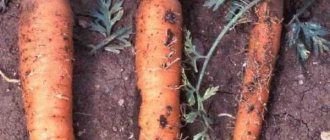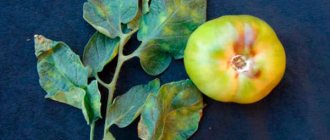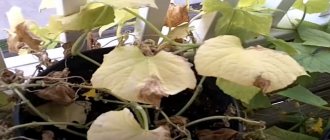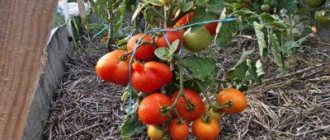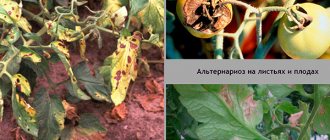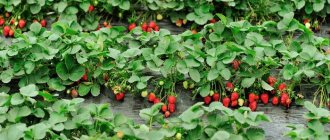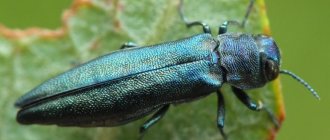Tomatoes belong to the category of common vegetable crops. They are grown by all gardeners in greenhouses and open ground. However, it is not always possible to get a good harvest of tomatoes even if all care rules are followed. The reason for this is fungal, bacterial, and viral diseases. Therefore, it is important to be able to identify the first signs of damage in order to take timely measures to treat or remove infected specimens. This will prevent the massive spread of pathogenic microflora. To do this, you need to study common tomato diseases in order to know how to act in a given situation.
Macrosporiosis or brown spot
The causative agent of the disease is the imperfect fungus Macrosporium. Its spores can remain viable for a long time not only in the ground, but also in seeds collected from infected tomatoes.
Macrosporiosis can appear within 10-14 days after planting seedlings in a permanent place. The disease progresses in the temperature range from +20 to 24 degrees. The fungus especially multiplies against the background of a regular change of sunny and rainy days, with heavy dew. Early varieties of tomatoes are more susceptible to macrosporiosis.
Symptoms
Macrosporiasis can be recognized by dry brown-brown spots that have a round shape. They have a clearly defined concentric zoning. Initially, characteristic signs appear on the lower leaves, and subsequently the fungus spreads to the stems up the plant, petioles and tomatoes. When fruits are affected, the spots become oblong and depressed.
After some time, the affected areas become covered with a gray coating, which indicates sporulation of the fungus. And then the affected leaves and fruits dry out.
Treatment and prevention
To prevent the development of macrosporiosis, it is necessary to use high-quality seed material, water the soil when planting seedlings, and observe crop rotation. Also, 10 days before transplanting the seedlings to a permanent place, it is recommended to spray them with a 1% solution of Bordeaux mixture, and then repeat the procedure 2 weeks after rooting in open ground or a greenhouse.
When signs of disease appear on the bushes, it is recommended to use systemic fungicides to treat them: Polychom, Arcerid, Ridomil Gold, Captan. And if the disease progresses strongly, it is necessary to immediately remove the fruits from the plant, regardless of their stage of ripening, and immerse them in water at a temperature of +60 degrees for 1 minute. After this, the tomatoes need to be wiped dry and ripened in one layer at +25 degrees.
How to get rid of frizz?
Let’s say right away that it is impossible to cure a bush affected by yellow curl. It needs to be removed. But it is quite possible to protect the greenhouse from this disease. You probably already guessed that you should take preventive measures against whiteflies and aphids, which are the ones that transmit the yellow curl virus. Main -
immediately destroy these parasites upon first detection. To do this, you should use the drugs “Aktara”, “Iskra” or “Aktellik”.
You must clearly understand that you need to ventilate the greenhouse daily and never allow the air humidity to rise to 80%. Higher humidity will definitely lead to diseases.
Perhaps it is worth mentioning a wonderful remedy for combating whiteflies - “Farmayod”. The bushes should be treated with this product at intervals of 10 days during the butterfly flight.
It is noteworthy that ground tomatoes are practically not susceptible to yellow curl, but greenhouse tomatoes are the opposite.
Alternaria or dry spotting
The disease affects tomatoes in open ground and greenhouses. Its causative agent is the fungus Alternaria solani Soraue. Alternaria blight progresses during the ripening period of tomatoes at a temperature of +25-30 degrees. The provoking factor is sudden changes in day and night temperatures, as well as heavy dew.
Alternaria blight is especially dangerous for tomatoes grown in film greenhouses. In this case, the first signs become noticeable already on the 2nd day after the pathogen hits the plant. Without control measures, yield loss can be as high as 78%.
Symptoms
Alternaria blight appears on tomato leaves in the form of brown round spots, up to 1.5 cm in diameter. Moreover, they always have concentric zoning. At high air humidity, the affected areas become covered with a dense black layer, which indicates sporulation of the fungus.
With further progression of the disease, the plates die, the stems and petioles are affected, which leads to their breaking off. Against this background, the tomatoes begin to fall off, ripening at an accelerated pace, never reaching the required size. The fungus also spreads to the seeds, after which they darken and lose their viability.
Treatment and prevention
Alternaria blight belongs to the category of diseases with an accelerated rate of development. Therefore, in order to preserve the harvest, it is necessary to pay increased attention to preventive measures.
Among them:
- timely removal of plant residues;
- spraying bushes with Fitosporin;
- use of fertilizers containing potassium.
To slow down the spread of infection when the first alarming symptoms appear, it is necessary to initially remove and destroy the affected leaves, trim the shoots to healthy tissue, and then treat the tomatoes with Ridomil Gold, Quadris, Revus. Repeat the procedure every 10 days, but no more than 3 times per season. It is also necessary to water the soil with Barrier once a month.
Powdery mildew (ashtray, white)
According to the description, the disease destroys the immune system of tomatoes. Powdery mildew feeds exclusively on plant sap, thereby depriving them of nutrients. The first appearance is found on tomato leaves as a white coating - this can be seen in the photo. Affected leaves quickly wither and fall off.
At the same time, new leaves form on the stems from dormant buds, but they are extremely weakened. Without taking proper measures, the bush in the greenhouse soon loses its resistance to any diseases and dies. They get rid of powdery mildew mechanically, followed by treating the bushes with protective drugs.
Mosaic
A dangerous viral disease that equally affects tomatoes in greenhouses and open ground. When infected, the plant does not die, but cannot fully develop. This leads to a decrease in yield and loss of taste. The causative agent of mosaic is the Tobacco mosaic tobamovirus virus. Crop losses due to this disease are 30-35%.
Symptoms
The mosaic appears on the leaves as alternating spots of green and yellow. Also, individual areas darken, and the plates themselves curl. With the rapid progression of the disease, characteristic spots appear on the fruits. The mosaic gives the impression that the bush was scalded with boiling water.
Treatment and prevention
The virus is carried by insect pests, and it can also enter an area with contaminated soil or seeds. Therefore, to prevent the development of the disease, it is recommended to treat the seedlings before planting in a permanent place in a solution of potassium permanganate for 20 minutes.
Affected bushes must be destroyed, since the mosaic cannot be treated.
Tomatoes resistant to cladosporiosis
Breeders have developed more than two dozen varieties of tomatoes with increased resistance to cladosporiosis. Our gardeners willingly grow wonderful “Nasha Masha F1” tomatoes in greenhouses. They are resistant to fungal diseases and very tasty. The Belarusian variety “Vezha” is no less popular, although its fruits are slightly smaller.
The varieties “Delicacy” with pink fruits and “Space Star F1” ripen well in greenhouses. For the sake of prevention, it is advisable to spray the latter with the drug “Alirin-B” or “Gamair”.
Separately, it is worth mentioning the tomatoes “Funtik” and “Evpator”. Their raw fruits are not so tasty, but these high-yielding varieties are very suitable for processing. They are the ones who most powerfully resist fungal diseases. These diseases happen to them very rarely.
Fomoz or brown rot
The disease affects tomato fruits, regardless of their degree of ripeness. The causative agent is the fungus Phoma destructiva. The disease spreads quickly in rainy, windy weather, as well as with excessive application of nitrogen fertilizers to the soil. Favorable temperature for fungal propagation is +18-22 degrees. Infection occurs through open wounds on the plant as a result of pinching, cracking of fruits and the activity of pests.
Symptoms
Phoma can be recognized by a brown spot in the area of the stalk. Over time, the fungus grows deep into the tomato and covers its core. The surface of such tomatoes becomes lumpy, and when you press on the spot, your finger is easily pushed inward. Affected fruits are unfit for consumption.
With Phoma, the leaves become covered with dark spots, which subsequently grow. As the disease progresses, black areas also appear on the stems and shoots.
Treatment and prevention
To prevent the development of fomosis on tomatoes, it is necessary to control soil moisture and the use of nitrogen fertilizers. It is also important to treat the soil with copper sulfate before planting seedlings and to treat the seeds in a solution of potassium permanganate.
To treat Phoma, when the first signs of the disease appear, it is recommended to remove the affected fruits, and then spray the bushes with Hom or Bordeaux mixture, repeating the procedure after each rain.
Causes of pathogenic microorganisms
Spores of pathogenic microorganisms, as well as insect larvae, can survive the harshest winter in unheated greenhouses. With the advent of comfortable conditions, both immediately begin their destructive activity for tomatoes.
Tomatoes in greenhouses can get sick, even if you completely replaced the soil before sowing. This happens if they took seedlings for growing, that is, they initially planted already diseased tomatoes.
No matter how tightly we close the greenhouses, insects still get inside and bring infection with them.
The danger of disease accompanies greenhouse tomatoes from the day the seeds are sown until the fruit is harvested. Treatment is complicated by the fact that flowering tomatoes cannot be treated with chemical protection agents. The flowering period is a favorable time for the proliferation of pathogens and parasitic insects. How many diseases there are can be seen from the photo.
Now you understand how important preventive measures are for tomatoes in a greenhouse.
Tomatoes in bloom can be treated for diseases using folk remedies. This is the addition of wood ash, dolomite flour or quicklime to the soil. In addition, if you water the soil with a milk solution, late blight will bypass the tomatoes. A very weak saline solution has a similar effect. Garlic infusion protects plants from fungal diseases. An infusion of onion peels provides the same effect.
When choosing tomatoes for growing in greenhouses, give preference to those varieties that are highly resistant to fungal diseases. Descriptions with photographs will help you understand tomato diseases and the fight against them.
Apical rot
The disease develops against the background of a biological disorder in the development of tomatoes. It only affects fruits. Provoking factors: lack of calcium in the soil, insufficient watering. Blossom rot progresses during the filling stage of tomatoes. Most often this happens when there is a sharp change from a dry period to rainy weather. Tomato species with elongated, large fruits and thin skin are more susceptible to the disease.
Symptoms
At the initial stage of development of tip rot, small gray dots appear on the tops of the fruit. As tomatoes grow, they increase significantly in size and become dark, merging with each other, forming a large spot.
Affected tomatoes become deformed, ripen prematurely, but lose their taste and become unsuitable for eating.
Treatment and prevention
To prevent the appearance of blossom end rot, it is necessary to observe crop rotation, treat the seeds before planting in potassium permanganate, and liming the soil at a high level of acidity.
If signs of blossom end rot appear, it is necessary to initially spray the bushes with calcium nitrate at the rate of 30 g per bucket of water or calcium chloride in the same proportion. Moreover, it is necessary to treat not only affected plants, but also healthy ones. And subsequently carry out root feeding with these fertilizers.
Leaf mold
Most often, this disease manifests itself during the flowering of tomatoes. A signal of leaf mold is the appearance of light green spots on the upper surface of the leaves. If immediate action is not taken, these spots will soon turn yellowish-white. Then the affected leaves begin to turn yellow, curl into tubes and fall off.
To prevent the occurrence of this disease, disinfect greenhouses, and before each planting of tomatoes, change the top layer of soil to a depth of at least 30 cm. Ventilate the greenhouse well daily. Treat the seeds before planting.
If the disease does occur, then you can try to save the tomatoes using the drug “Zineb Suspension” or its analogues.
Black bacterial spot
The disease develops at high humidity and temperatures within +15-22 degrees. The causative agent is the aerobic gram-negative bacillus Dowson. Bacterial spotting progresses during periods of intensive fruit growth. The bacterium can survive on seeds and weeds. It penetrates into the plant through microscopic wounds.
Symptoms
The disease manifests itself locally on stems, leaves, and petioles. It can be recognized by watery, shapeless spots 2-3 mm in size. They have a narrow chlorotic halo. Sometimes the spots merge into a single whole and spread to the veins. With severe damage, the leaves suddenly turn yellow and fall off.
As the disease progresses, it spreads to green fruits in the form of dark spots, which are bordered by a watery halo. Subsequently, they increase in size and become depressed. As a result, the skin of the fruit in the affected area cracks along the periphery and the spots turn into scabs. Around them, the tissues become watery with deep rot.
Treatment and prevention
Bacterial black spot is easier to prevent than to treat later. To do this, it is necessary to observe crop rotation, disinfect seeds at a temperature of +52-53 degrees and purchase varieties that have increased resistance to bacteria.
The disease cannot be treated, but its development can be slowed down and the negative impact of the bacteria on tomatoes can be reduced if the bushes are treated weekly with a 1% solution of copper sulfate or Bordeaux mixture.
Yellow curl
The causative agent of yellow curl is the virus of the same name. It is carried by whiteflies and aphids. The sad thing is that this disease can occur at any stage of tomato development. Even a weak form of yellow curl entails a yield loss in the greenhouse of at least 15 percent. If the disease is not defeated in time, the entire crop will die.
Yellow curl is manifested by a change in leaf color from green to light yellow. In this case, light yellowness may cover only the edge of the leaf. The rest of it remains dark green.
The word “curly” is present in the name of the disease for a reason. The leaves on the tops of the affected tomato bushes actually become curly and decrease in size. Bushes affected by yellow curl grow very slowly, and flowers often fall from them. Worse, the resulting fruits stop gaining weight and remain small forever. Their flesh turns out to be excessively dense, and their shape is ribbed.
Stem necrosis
Tomatoes and potatoes suffer from this bacterial disease. The disease occurs at the beginning of fruiting. Pseudomonas, the causative agent of the disease, is spread by seeds. Subsequently, the bacteria are transferred to other bushes - with streams of irrigation water, even with the help of the wind.
Stem necrosis is an insidious disease, since it does not manifest itself for a long time. It is known for certain that the incubation period lasts 18 days. The first symptoms of the disease are found on the tallest bushes at the time of the birth of the first cluster.
An elongated, slightly depressed brown spot appears on the lower part of the stem, under which bacteria rapidly multiply in the tissues of the stem. Under pressure from a growing colony of microbes, the stem cracks and a cream-colored liquid flows out of it. This substance is full of pathogenic bacteria.
If you cut the stem of an affected plant lengthwise, you will see that its core seems to have become glassy. Subsequently, it dries completely and becomes almost black. It is amazing that fruit development continues on the affected bushes. Light veins appear on their surface, which do not disappear after full ripening. If you shake a bush affected by stem necrosis, the tomatoes or flowers will begin to fall off.
The tricky part of the disease is that the infection persists in the tomato seeds. True, affected seeds can be easily distinguished from healthy ones by their deformation and the presence of dark spots. Burn such seeds. Affected fruits should not be eaten!
If treatment is not started, the tops of diseased bushes will begin to darken and lose turgor. Soon the entire bush will wither and die.
Treatment of tomato seeds against diseases and pests
Healthy and high-quality seeds are a guarantee of a good harvest
Seeds from a reliable manufacturer, purchased in a store, are usually carefully prepared - cleaned of impurities, calibrated, tested for varietal purity and germination, they are also treated with special anti-disease drugs, and a dye is applied. The mixture for inlaying seeds may include micro- and macroelements and growth stimulants. Pay attention to the label, it says, for example, “treated with thiram.” These seeds are brightly colored. There is no need to wash off the preparation, pre-soak or further treat such seeds; seed growers recommend sowing them dry, but always in moist soil.
If you have prepared tomato seeds from your own varietal plants or received them from friends and neighbors and are not sure of their quality, then it is worth disinfecting them and stimulating germination.
Disinfection of seeds reduces their contamination with pathogenic microorganisms and increases the stability of seedlings.
The sun gives us the most accessible way to dry seed treatment - lay the seeds out in the open air for 2-3 days. To combat infection inside the seeds, heat tomato seeds for 24-38 hours at a temperature of 30-40°C, then 48 hours at 50-55°C.
Wet disinfection at home is carried out using various available means. The most popular treatment is potassium permanganate: soak tomato seeds in a 1% solution for 30 minutes.
You can use other disinfectants, but only one of them, and not all at once:
- take a 2-3% solution of hydrogen peroxide, heat it to a temperature of 38-45°C, soak the seeds for 5-10 minutes;
- prepare a 3% solution of concentrated (80%) acetic acid, soak the seeds for 2 hours, then rinse thoroughly with water until the reaction is neutral (check it with litmus paper);
- prepare biologically active aloe juice in advance, for which put the plucked leaves in the refrigerator (or in a dark place at a temperature of 2°C) for 5-6 days, squeeze out the juice and dilute it 1:1, soak the seeds in aloe juice for 1 day, and then dry.
Aloe juice disinfects and stimulates seed germination
You can increase the resistance of plants to diseases by soaking them in a fertilizer solution before sowing. Prepare a solution of 10 g of superphosphate, 10 g of potassium nitrate and 0.2 g of manganese sulfate per 1 liter of water, soak the seeds for 12 hours, dry.
In gardening stores there is a wide range of drugs that give plants resistance to pathogens and pests, usually these are growth regulators of various natures that increase the plants’ own immunity, as well as microbiological preparations. Use any available seed treatment product.
Seeds can be soaked before sowing in one of the bacterial agents designed to combat disease. The drug Trichoderma Veride 471, the name of which indicates the active agent - a strain of bacteria, protects tomatoes from root and basal rot, tracheomycosis wilt. Dissolve 3 g of the drug in 10 liters of water, before sowing, soak the seeds for 1-2 hours and then dry them. To treat 100 g of seeds, 100-150 ml of working solution is sufficient.
The complex preparation Sporobacterin contains strains of Bacillus subtilic + Trichoderma viride, it protects against root rot, blackleg, late blight and brown leaf spot. Soak tomato seeds in a 1% solution for 6 hours before sowing.
Preparations based on arachidonic acid increase resistance to adverse environmental factors and diseases. To prepare a working solution of Immunocytophyte, you will need 1 tablet per 10-15 ml of water, this solution is enough to treat 5 g of seeds, soak them for 2-3 hours before sowing. The working solution of the drug Sprostok is prepared from 0.2 ml per 100 ml of water; for 10 g of seeds, 20 ml of solution is required, soaked for 1 hour before sowing. You can take similar preparations Obereg and Biodux, treat the seeds according to the instructions.
Preparations based on the salt of orthocresoxyacetic acid increase germination, seed germination energy, disease resistance and stimulate root formation. Prepare a working solution of Krezacin by dissolving 1 tablet in 200 ml of water, this solution is enough to treat 100 g of seeds, soak them for 30 minutes before sowing. Similar drugs are Energy-M, Mival-Agro.
A synthetic analogue of the natural hormone epibrassinolide is part of the popular drug Epin-Extra. It increases seed germination, enhances growth and increases resistance to diseases and adverse environmental factors. Prepare a solution of 0.05 ml of the drug per 200 ml of water, soak the seeds for 2 hours before sowing. The working solution is sufficient to treat 100 g of seeds.
Another drug that enjoys the trust of summer residents is Zircon; its active ingredient is hydroxycinnamic acid, extracted from the natural raw material of Echinacea purpurea. It increases the plant’s own immunity and protects against diseases. To prepare a working solution of 0.1-0.2 ml, dilute the drug in 150 ml of water. This solution is enough to treat 100 g of seeds. Soak the seeds for 1-2 hours before sowing.
The active substance of one of the growth regulators is extracted from Echinacea purpurea
The drug Agrostimul is created on the basis of the natural bioflavonoid dihydroquercetin. Flavonoids are responsible for plant immunity and resistance to stress. Before sowing, soak tomato seeds for 2 hours in a solution prepared from 0.01 ml of the drug per 100 ml of water; this solution is enough to treat 100 g of seeds.
Gardeners often soak seeds in a humate solution before sowing. For example, the drug Bigus, containing potassium salts of humic acids, improves plant immunity. Prepare a solution of 4 ml of the drug and 200 ml of water, soak the seeds for 6 hours, this solution is enough to treat 100 g of seeds.
Remember that one treatment with any preparation is quite enough; you should not experiment and soak tomato seeds in all available means. This is the very case when porridge can be spoiled by oil.
Physiological diseases
This group includes deformations and growths of fruits. They usually develop in hybrids with low immunity as a result of repeated use of growth stimulants and pesticides in high concentrations. Sometimes unfavorable weather conditions and poor tying become a provoking factor.
Hollowness of fruits
Deformed tomatoes grow small, clumsy, take on a cone-shaped or cubic shape, and a ribbed surface. Outwardly, these tomatoes resemble sweet peppers. Their skin is hard to the touch and very dense. When pressed, it is difficult to pierce. No juice is released from the cut fruit due to the lack of pulp.
Reasons for the development of hollowness:
- The air temperature is above +32°C, when the ability to pollinate deteriorates. There is too little healthy pollen to form normal fruits.
- A combination of high humidity and air temperature below +13°C. Pollen sticks together into lumps and does not spill out of the anthers. Tomatoes grow deformed, with underdeveloped seeds.
- Growing bee-pollinated varieties in closed ground. Greenhouses are free of insects and wind, which promote natural pollination.
On a note!
Hollow tomatoes take a long time to ripen and spoil quickly. They taste unsweetened.
Hollowness cannot be cured. The only way to combat this disease is prevention. In tomatoes, ovaries form at temperatures from +18 to +25°C. This regime must be maintained in the greenhouse. The air humidity level should not exceed 70%. To prevent the air from stagnating and condensation from accumulating inside, you need to regularly open windows and doors for ventilation.
When flowering begins, a fan is installed in the room to improve the spread of pollen throughout the flowers. It is useful to place sweet bait in the greenhouse - it attracts bees. The branches must be shaken daily to release pollen from the anthers. In June, it is recommended to use drugs that stimulate fruit formation. At the flowering stage, plantings should be treated with boric acid.
Oedema (leaf swelling)
With this disease, strong intraradicular pressure develops. The result is swelling on the leaves. The cause is excessive watering. Moisture accumulates in the roots and enters the above-ground part. The plant is not able to process large amounts of water, so the tissues swell. Growths in the form of drip warts appear on the leaf blades. They are dense to the touch and look like white rot. Gradually, the growths spread over the leaves, petioles and stems. Damaged parts stop functioning and die.
Oedema does not affect the yield of tomatoes and is not dangerous for other plants. If care is normalized in a timely manner, the disease can be stopped. The cause of oedema in greenhouse tomatoes is poor watering or crowded planting of bushes.
Treatment consists of regulating soil moisture. At the initial stage, immediately stop watering to dry the soil. If the foliage begins to fade, it is sprayed with warm water. At the same time, reduce air humidity in the shelter and organize regular ventilation. After 3-4 days, the condition of the oppressed bushes returns to normal.
To prevent oedema, water tomatoes after the top layer of soil has dried no more than once every 6 days. Open windows daily to improve air circulation. The temperature is maintained above +16°C. If the thermometer drops lower, moisture absorption and evaporation deteriorate.
Apical rot
The disease develops at the stage of milky ripeness of tomatoes. A whitish or brown spot appears on the area of the flower scar, then it acquires a blackish-brown or gray color, as in the photo below, and becomes concave. The damaged fruit ripens earlier than the others. The inside of the pulp dries out. This tomato is not suitable for eating.
The reasons for the development of blossom end rot are:
- elevated temperature;
- water scarcity;
- high soil acidity;
- soil overheating;
- lack of calcium and excess nitrogen in the soil.
To prevent the disease, biofungicides and biostimulants are used: Fitosporin-M Tomato, Baktofit, Fitolavin, Trichodermin. Before sowing, the seeds are treated with potassium permanganate. During cultivation, the watering regime is observed.
If the disease has already been detected, the damaged fruits are picked and disposed of. The bushes are sprayed with a solution of calcium chloride at a concentration of 1%. The treatment is repeated every week. You can treat crown rot with folk remedies: spraying with a soda solution or ash infusion every 3-4 days.
Yellowing of tomato leaves
Yellowness on greenhouse tomato bushes develops due to an imbalance of nutrients in the soil. If there is not enough nitrogen, the stems become thin, the leaf blades become smaller and turn yellow. To normalize the condition, add mullein infusion or nitrogen fertilizers.
Manganese deficiency at the initial stage is expressed in the lightening of the leaves, yellowness appears later. Young leaves are the first to suffer. To eliminate the lack of manganese, use mineral complexes or water the bushes with an infusion of manure and ash.
If there is not enough magnesium in the soil, the leaves between the veins turn yellow, then turn red. To eliminate the disease, the bushes are treated with magnesium nitrate.
If there is not enough zinc, the leaves become covered with brown spots, dry out and fall off. As a treatment, the bushes are sprayed with a solution of zinc sulfate.
Important!
Tomato leaves turn yellow if the concentration of phosphorus in the soil is exceeded. They become covered with spots of necrosis. Plants age quickly. To normalize the quality of the soil, it is partially replaced, the acidity of the soil is monitored, and the plants are watered with soft water.

